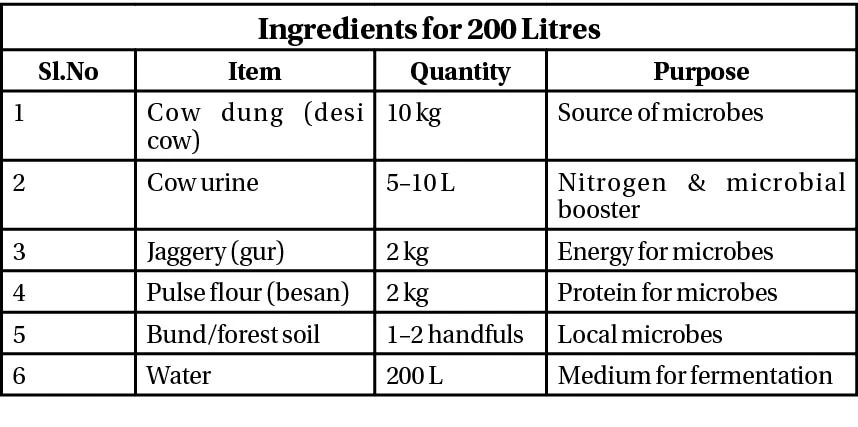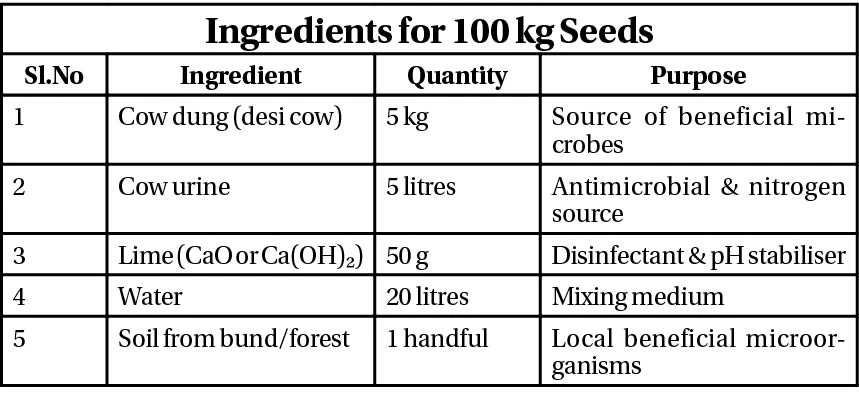
Dr Bendangla Imsong, SMS/CTO, KVK Dimapur and Dr Phool Kumari, SS cum Head, KVK Dimapur
Jeevamrit – Natural Farming Bio-fertilizer
Why use Jeevamrit
* Boosts beneficial microbes in soil.
* Improves nutrient uptake by plants.
* Reduces chemical fertilizer dependency.

Preparation Steps
1. Container: Use plastic drum/cement tank (not metal).
2. Mixing: Add cow dung, urine, jaggery, pulse flour & soil into water. Stir well.
3. Fermentation: Keep in shade; stir 2 times/day (clockwise & anti-clockwise).
4. Time: Ready in 5–7 days (sweet-sour fermented smell).
Application
Soil drenching: 200 L/acre every 15–30 days.
Drip irrigation: Filter & apply.
Seed treatment: Dilute 1:5 with water, soak before sowing.
Jeevamrit is best used fresh within 5–7 days after preparation (this is also the fermentation period).After fermentation is complete, it can be stored for up to 15 days in a shaded, airtight container, but stir daily to maintain oxygen supply, avoid direct sunlight to prevent microbial death. After 15 days, nutrient content remains, but live microbial count declines, so its benefit as a biofertilizer reduces.
Beejamrit – Natural Seed Treatment
Purpose
* Protects seeds from fungal & bacterial diseases.
* Promotes healthy germination.
* Encourages beneficial microbial growth on seeds.

Preparation Steps
1. Dissolve lime in 1 litre water; let it settle for 10–15 min.
2. In a bucket, mix cow dung + cow urine into 20 litres of water.
3. Add lime water and bund soil, mix thoroughly.
4. Filter the mixture through a clean cloth to remove large particles.
Application
Spread seeds on a clean tarpaulin.
Sprinkle Beejamrit solution over the seeds while mixing with hands or a stick until uniformly coated.
Shade-dry for 30–60 minutes before sowing.
Benefits
Prevents seed-borne & soil-borne diseases.
Improves germination percentage.
Increases early seedling vigour.
Beejamrit is best used immediately after preparation for maximum microbial activity. It can be stored up to 24 hours in a shaded, cool place. After that, microbial activity drops and fermentation changes the composition — reducing seed protection efficacy.
Farmer practice tip:
• Prepare Beejamrit only on the day of seed treatment.
• Prepare Jeevamrit in small batches so it’s fully used within 1–2 applications after fermentation.
• Always use native cow dung/urine & non-chlorinated water for best results.



